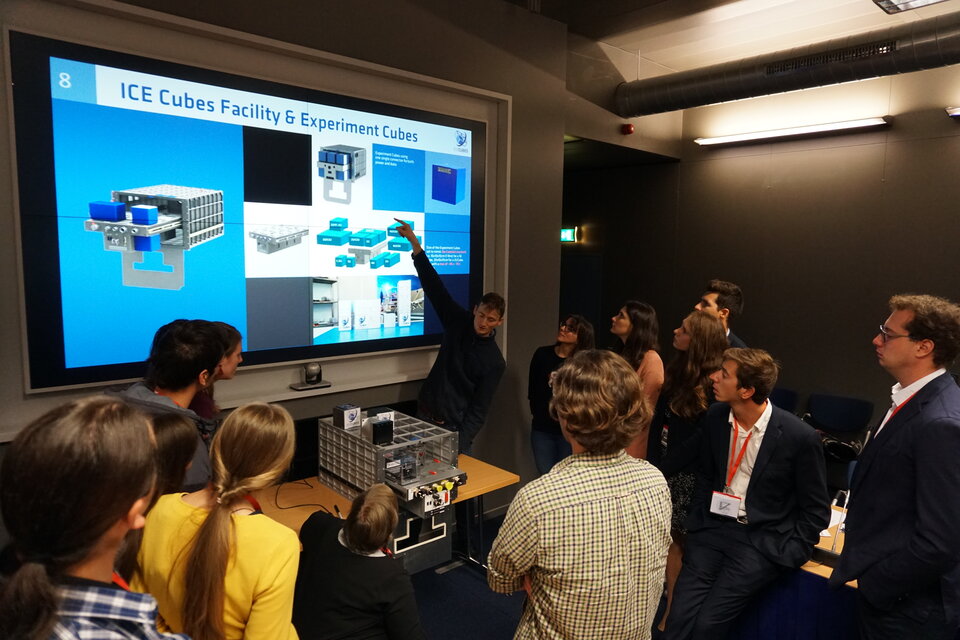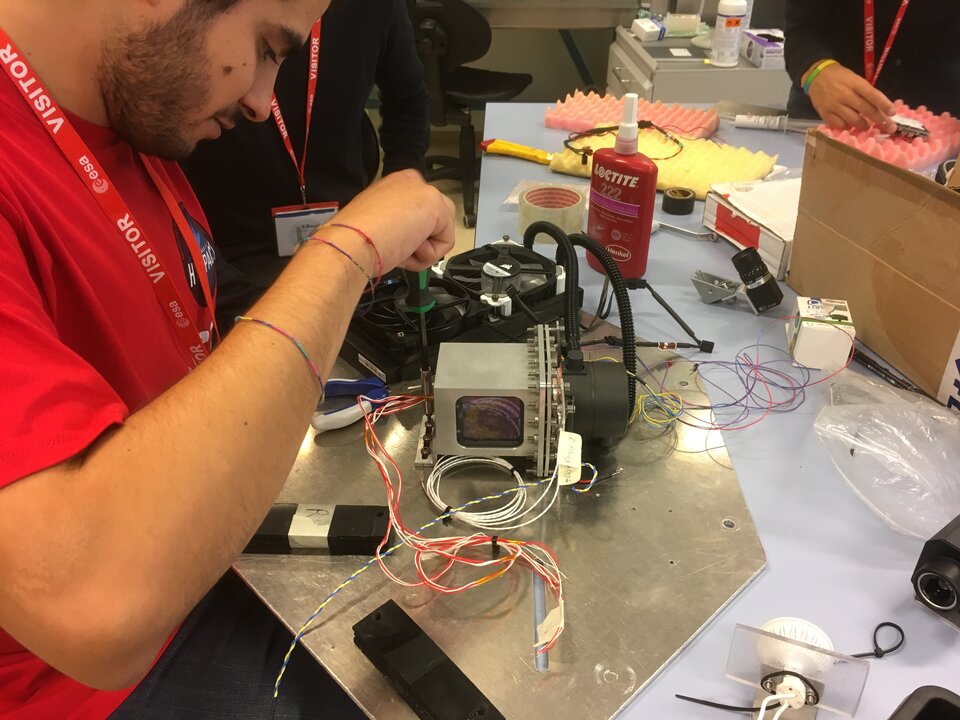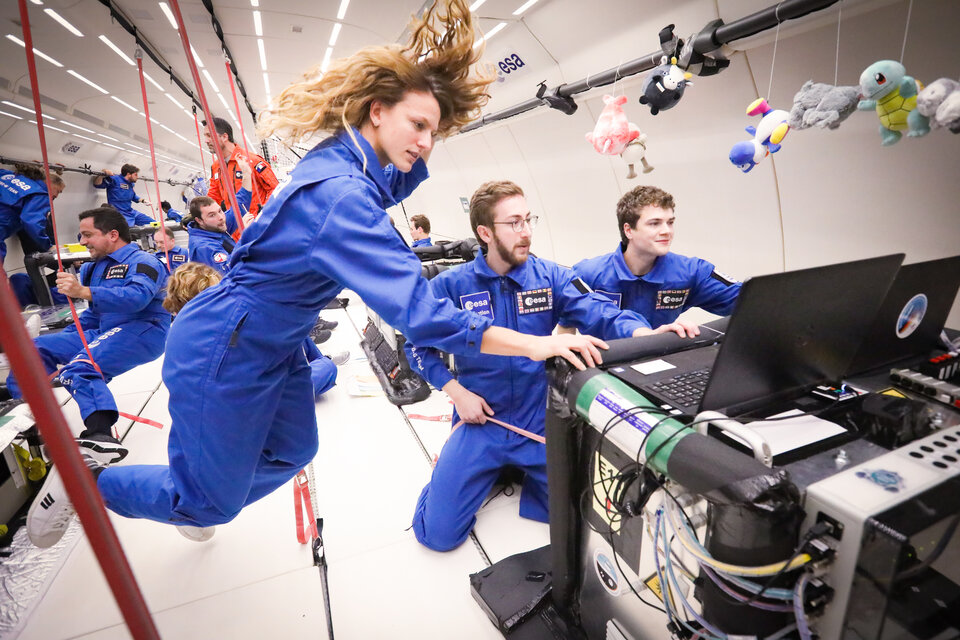About the ESA Academy Experiments programme
In brief
This programme is offered to eligible state university students on a yearly basis to give a unique and well-rounded introductory experience in the professional world of research and development of space science and technology disciplines.
In-depth

ESA Academy Experiments is a programme geared towards assisting student teams along all the steps of developing their project from concept to operations and data analysis, guiding them through industry standard engineering practices, good project management, risk mitigation and effective fundraising techniques. During the project, a strong emphasis is placed on regular interaction and guidance from professional engineers and scientists through regular meetings and documentation. The outcome of participation is a unique practical experience and training with the European Space Agency and its partners that complements and enhances university students’ academic journey. The programme offers multiple platforms for teams to conduct their engineering or scientific experiment, these are the Large Diameter Centrifuge, the Bremen Drop Towers, the Parabolic Flights, the ICECubes Facility on board the International Space Station, the Space Rider and the Orbital Robotics Lab. Please be advised that the platforms open to receive proposals for each edition of the Experiments Programme change from one year to another. We invite you to check the Announcement of opportunities for the ESA Academy Experiments Programme 2025/2026 to see which platforms are open for applications in each cycle. The portfolio of available platforms on offer will increase in the future to accommodate more diverse research and technological development projects.
The ESA Academy Experiments programme encompasses and replaces a multitude of programmes previously known as Fly-, Drop-, Spin-, Orbit-Your Thesis! and PETRI. To meet ESA Director General’s objectives, set out in ESA’s Agenda 2025, the ESA Education Office is implementing a long-term vision called Space for Education 2030 which will better prepare and engage today’s youth for space related jobs and activities of the future.
Programme steps

The ESA Academy Experiments programme is divided into four phases designed to assist prospective students through the entirety of the programme. The corresponding dates and milestones are published on the schedule page.
1. Listen and Learn
Each ESA Academy Experiments programme cycle begins with an announcement of opportunity released on ESA Education’s website. The announcement encourages interested parties view a series of prerecorded presentations to help them decide on how best to approach their project idea. The topics covered in these video series aim to give students a broad understanding of the agency, its activities, as well as the facilities that are available as part of this programme. Importantly the series also includes information about the science and technology fields that ESA is interested in pursuing – fields that the proposed experiments should be related to.
Click here to view the videos specially prepared for ESA Academy Experiments programme!
2. Consult and confer
After having viewed all the content in the listen and learn phase videos, prospective student teams are encouraged to contact the ESA Academy office in the second phase of the programme. Throughout this period, interested teams should begin assembling their experiment proposal using the templates provided on the How to apply page. To ensure the best quality possible submission, ESA Academy offers ad hoc advice, guidance and answers to any questions which teams may have regarding their experiment idea and application. This consultation phase does not influence the selection process further down the line, all questions are welcome, and teams are encouraged to get in touch regardless of the query. The objective of this period is to ensure that the teams submit the best proposal they can and facilitate the ideation process.
3. Submit and succeed
The consultation period ends with the application deadline. A panel of experts will review the experiment proposal over a period of a few weeks and notify which teams are shortlisted for a virtual presentation to the Selection Panel and Board.
Teams that have not been shortlisted will receive feedback on their proposal and how it can be further improved for subsequent submission the following year.
Shortlisted teams will present their project to the Selection Panel and Board. The teams will be expected to answer questions from the selection experts immediately after the presentation. Within a few days of the presentation, all teams will be notified of the outcome of the selection process. Unsuccessful teams will receive feedback on the documentation and presentation to help any future attempts to apply to this or any other programme.

4. Perform and Publish
Selected teams will continue in the programme and meet with their appointed engineers within a week of selection, thus marking the official project kick-off.
Teams will work towards defining their scientific and engineering requirements and iterate with ESA Academy and industry experts their designs through a series of reviews. Assembly and testing phases complete the 7-9 month-long period between the selection and the campaign. Projects running on the ISS or Space Rider will require longer time periods and are subject to launch availabilities.
At campaign, teams will finally have the opportunity to run their experiment on the selected platform and gather the long-awaited data. Four months after the campaign, teams will have to submit a final version of the documentation bringing to a close their project with ESA.
Teams are encouraged to share their data and experience in peer reviewed journals and scientific and engineering symposia and conferences.

